Source: The Conversation (Au and NZ) – By Paul Williams, Associate Professor, Griffith University, Griffith University
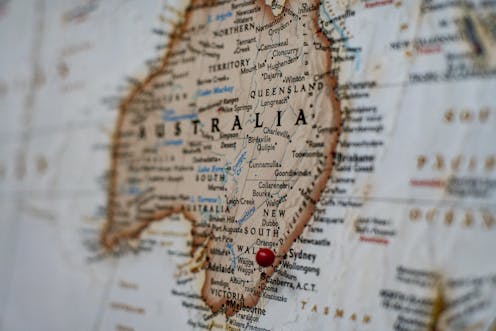
Joey Csunyo/Unsplash
Over the next six weeks, Prime Minister Scott Morrison and Labor leader Anthony Albanese will dash around the country, trying to secure as many precious votes as they can.
We know from previous elections that different parts of the country can react very differently come election day.
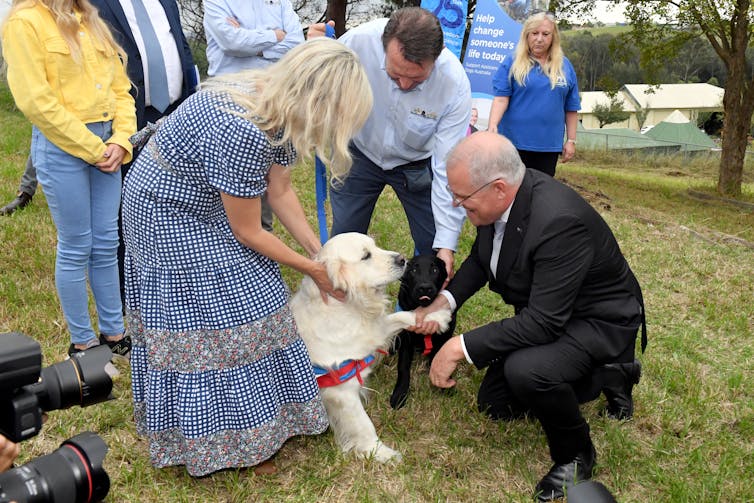
Mick Tsikas/AAP
What are the key seats and issues affecting Australians? Here, six Australian politics experts tell us what to expect in Queensland, Victoria, South Australia, Western Australia, Tasmania and New South Wales.
QUEENSLAND
Paul Williams, associate professor in politics and journalism, Griffith University
The usual electoral rule is only seats held by a margin of fewer than five percentage points are in play at this point of an electoral cycle.
But these are unusual circumstances. After nine years’ incumbency, the Coalition looks tired and accident-prone. On the heels of an escalating cost-of-living crisis, all government seats under 10% in Queensland are vulnerable to a Labor assault, especially given 2019 was an artificially high watermark for the Liberal National Party.
À lire aussi :
The polls look grim for the Coalition. Will Queensland buck the trend again?
That means at least ten Queensland seats will be “in play”. These are: Longman (3.3%), Leichhardt (4.2%), Dickson (4.6%), Brisbane (4.9%), Ryan (6.0%), Bonner (7.4%), Herbert (8.4%), Petrie (8.4%), Forde (8.6%) and Flynn (8.7%).
Paradoxically, of these, smaller margin seats like Leichhardt and Dickson could be a bigger ask for Labor (given the high profile of their sitting LNP MPs, Warren Entsch and Peter Dutton) than “hip-pocket nerve” seats like Petrie, Forde and Herbert.
But watch out also for Bowman (10.2%) where the retiring LNP MP Andrew Laming has attracted the wrong sort of publicity and Capricornia (12.4%) where economic insecurities will also loom large.
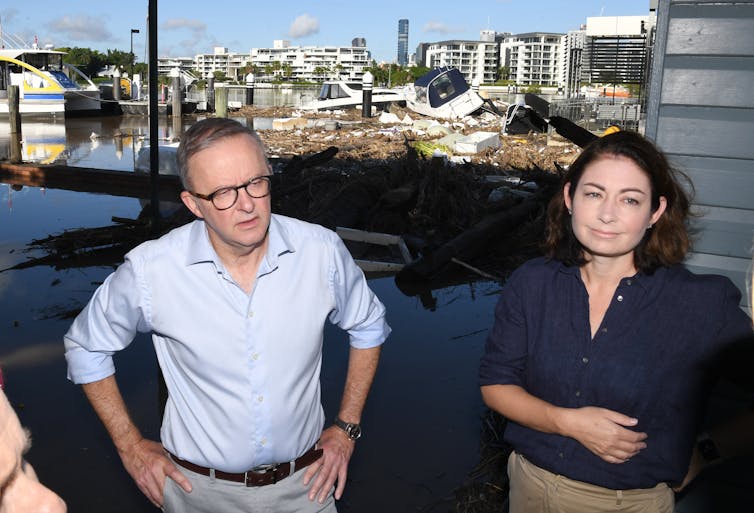
Darren England/AAP
The above, of course, is predicated on a uniform swing across Australia – something that rarely if ever occurs. Indeed, some opinion polling has found Queensland – always a battleground state – is the slimmest lead for Labor in Australia. If so, Labor seats in danger of falling to an aggressive LNP campaign include Lilley (0.6%), Blair (1.2%), Moreton (1.9%) and Griffith (2.9%). Both the LNP and the Greens have Griffith in their sights.
In the Senate, the race for the last two of six seats will be between the Greens (almost certain to win one spot) and for the other, Clive Palmer of his own United Australia Party, former Queensland premier Campbell Newman for the Liberal Democrats and – the likely winner – Pauline Hanson.
Outgoing Nationals MP George Christensen has just announced he will also run on One Nation’s Senate ticket – in the unwinnable third spot.
What kind of PM do Queenslanders want?
This election will be a referendum on two issues.
The first is which party is more in touch with the growing cost-of-living crisis. Despite recent relief in fuel prices, the soaring costs of fresh food and housing are high on Australians’ list of gripes. While the government can brag about attaining the lowest unemployment in 50 years, this means little to Australians who work too few hours or earn too small a wage.
À lire aussi :
Why ‘freedom’ is not the only thing worth fighting for
The second is the qualities Australians want in their prime minister. In 2019, the freshly-minted Morrison – with baseball cap, rolled up sleeves and beer in hand – struck a note of authenticity. But, three years later, amid accusations (from other Liberals) Morrison is just another tricky politician, the less well-known Anthony Albanese will be worth the risk for many.
What’s changed since 2019?
Most of the changes since the last federal election point to a more challenging environment for the Coalition in Queensland.
First, Albanese is not Bill Shorten. Second, where Shorten, via a complicated franking credits tax, gave the government an enormous target, Labor under Albanese has curled itself into a tight policy ball.
Moreover, coal, which last time wedged Labor between regional blue-collar voters and urban white-collar workers, has hardly been mentioned since COVID-19. The LNP itself will likely be wedged in the regions as the populist right, led by Palmer, Hanson and Newman, strips votes from the LNP in the name of “anti-mandate freedom”, with preferences potentially leaking to Labor.
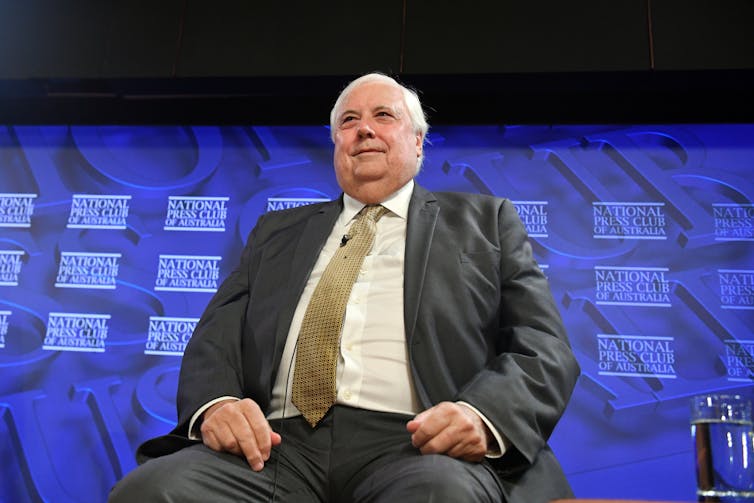
Mick Tsikas/AAP
Many political observers assume Queensland votes as a singular constituency or, at best, as a dual constituency across Brisbane and “the Bush”. But my research has found at least six electorally distinct Queenslands, each with its own peculiarities.
We often say a general election is really a series of mini-elections whose parts are more critical than the whole. In light of the points above, Queensland in 2022 really will be a collection of 30 unique contests.
VICTORIA
Zareh Ghazarian, lecturer in politics, Monash University
In Victoria, the contest in the House of Representatives is set to be focused on a handful of seats.
As the election pendulums prepared by Malcolm Mackerras and Antony Green show, Victoria has just one seat held by less than one percent – Chisholm. This was won by Liberal MP Gladys Liu in 2019 and has a margin of just 0.5%, making it the second most marginal seat in the country.
The Labor Party will also be defending Corangamite held by Libby Coker on a margin of 1%.
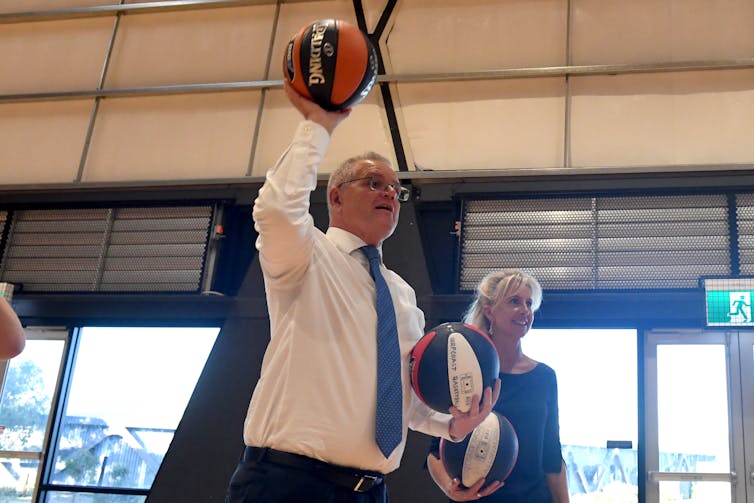
Mick Tsikas/AAP
Many seats in Victoria were affected by an electoral redistribution after 2019, which changed their boundaries and created an additional electorate due to the state’s growing population. This means the state is electing 39 MPs to the House of Representatives. It is expected the new seat of Hawke, which takes in suburbs from the west of Melbourne, will be a safe Labor one.
The teal challenge
There are also independents advancing a broadly progressive agenda contesting traditionally safe Liberal seats including Kooyong (currently held by Treasurer Josh Frydenberg) and Goldstein (currently held by Liberal MP Tim Wilson). The 2022 election will test the extent to which the agenda promoted by these independents resonates with traditional Liberal voters.
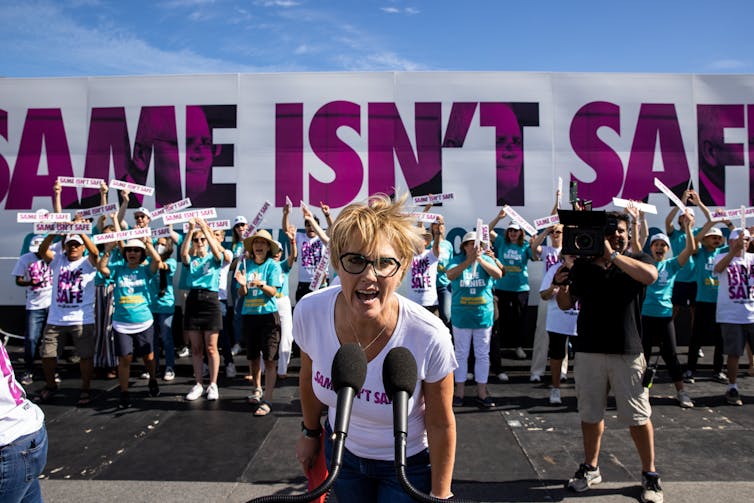
Diego Fedele/AAP
The Greens will expect to hold Adam Bandt’s seat of Melbourne, while also aiming to win other inner-city electorates such as Higgins, which is currently held by the Liberal Party with a margin of 3.7%.
In the Senate, minor parties such as One Nation have traditionally performed poorly. It would be expected the previous pattern will continue. In 2019, the Liberal Party won three of the six seats up for election, the ALP claimed two seats and the Greens won one seat.
SOUTH AUSTRALIA
Rob Manwaring, associate professor in politics and public policy, Flinders University
Historically, South Australia’s has little direct impact on federal elections. Due to shifts in population, the overall number of federal seats in the state has declined to just ten.
Of the Liberal party’s 20 most marginal seats, South Australia has only one in play – Boothby – currently with a nominal lead for the Liberals of 1.4%. Of the twenty most Labor-held marginal seats, none are in South Australia.
Yet, the political issues in South Australia are a microcosm of the wider national dynamics. In Boothby, outgoing Liberal MP Nicolle Flint unexpectedly stood down, citing sexism and abuse from the left side of politics. Both the major parties are fielding two new candidates.
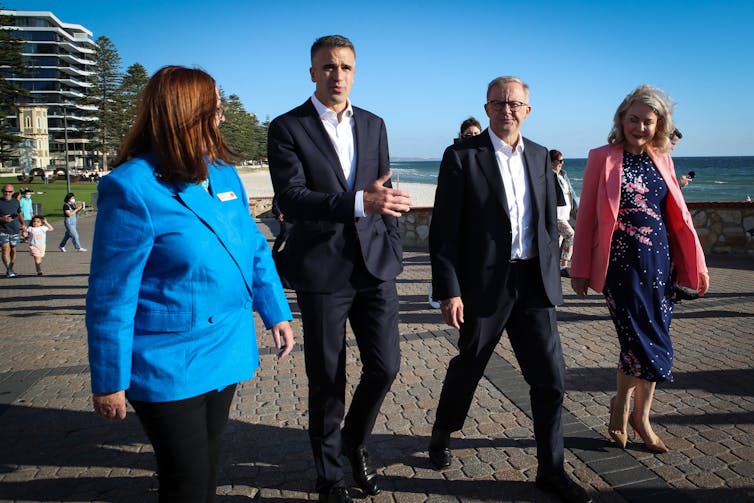
Matt Turner/AAP
Strikingly, Jo Dyer is also running as an independent in the seat. Dyer’s candidacy reflects the growing national trend for female candidates to challenge in marginal Liberal or anti-Labor seats. Dyer is the outgoing Adelaide Writers’ Week director and high-profile advocate for the deceased woman who accused Christian Porter of rape – the former attorney-general has strenuously denied the allegations.
If the ALP does as well as polls predict, then Boothby will fall to Labor for the first time since 1949. If a large anti-Coalition vote comes in the seat of Sturt (held by the Liberals on 6.9%) would also fall.
Xenophon attempts a comeback
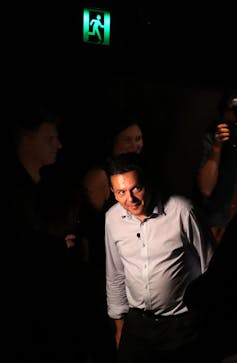
Kelly Barnes/AAP
South Australia’s Senate vote might prove to be a more bitter contest. The surprising electoral reappearance of Nick Xenophon (who retired in 2017) has provoked a rivalry with his former running mate, independent senator Rex Patrick.
Last month, Patrick used parliamentary privilege to flag concerns about Xenophon’s work for Chinese telco Huawei (Xenophon says he has not worked for the company for more than 18 months). This political dispute intersects with the Morrison government’s campaigning on national security and the all-important defence sector in South Australia.
State election momentum
The most significant electoral dynamic to strengthen the federal ALP campaign will be the unexpectedly thumping win by Peter Malinauskas at the state election in March.
À lire aussi :
Liberals’ brutal loss in South Australia reflects the fragmented politics of the centre-right
The ALP will take heart from state Labor’s focus on health policy – a key issue within the state. Interestingly, Morrison’s appearance on the campaign trail had little positive impact for the state Liberals.
What might help the Liberals’ campaign in the state, is that unlike the rest of the nation, there has never been a significant presence of the Nationals.
WESTERN AUSTRALIA
John Phillimore, professor and executive director, John Curtin Institute of Public Policy, Curtin University
For more than 30 years, Western Australia has been a Liberal safe haven at federal level. But after Labor and Premier Mark McGowan’s astounding victory in 2021, could 2022 be different?
À lire aussi :
Meet Mark McGowan: the WA leader with a staggering 88% personal approval rating
The Liberals currently hold 11 of WA’s 16 seats but a redistribution means WA lost a seat, so notionally the numbers are now ten Liberal and five Labor. In 2019, Labor thought it had a strong chance in four Liberal seats but instead suffered a swing against it. Expectations are more tempered this time around, but Labor is quietly optimistic it can win at least two extra seats, with one or two surprises possibly in store.
The most marginal seat is Cowan, held by Labor’s Anne Aly on a 0.9% margin. She is up against the Liberal MP for the now-abolished adjacent seat of Stirling, Vince Connolly.
Aly has a high profile and polls suggest the current swing is to Labor, so she is likely to win. If the Liberals win Cowan, Labor’s chances in WA and nationally would nosedive.
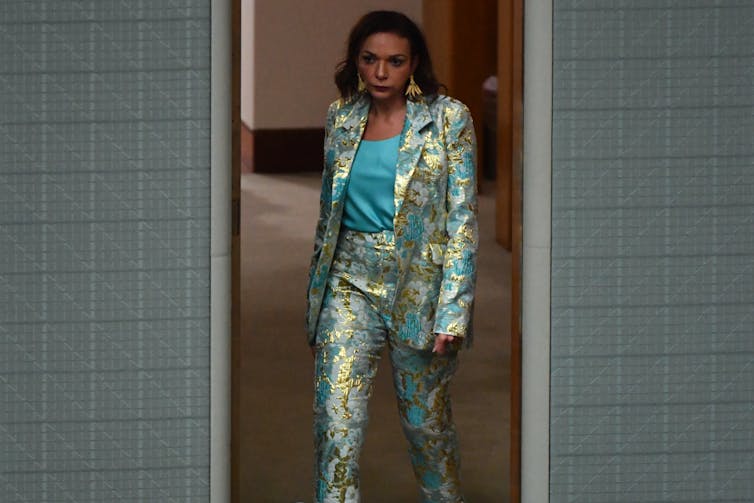
Mick Tsikas/AAP
Swan (3.2%) and Pearce (5.2%) are the two Labor “must wins” in WA if they want to form government. Longstanding Liberal sitting members Steve Irons and Christian Porter are retiring and the latter’s seat of Pearce has had a major redistribution, which should help Labor’s candidate Tracey Roberts, who is the local mayor.
Hasluck is held by Minister for Indigenous Australians Ken Wyatt on a 5.9% margin. Labor had high hopes last time but Wyatt instead secured a 3.3% swing in his favour. This seat will be a big test of whether WA has decisively moved into the Labor camp. If it has, then Tangney, held by 9.5% by the Liberals, might even come into play. This would be a big blow to the Prime Minister, as it is held by his close colleague, Ben Morton. Published polling shows the seat is close.
Finally, the blue-blood seat of Curtin – Julie Bishop’s former seat now held by Celia Hammond (on 13.9%) – is targeted by high-profile independent Kate Chaney, from the well-known political and business family.
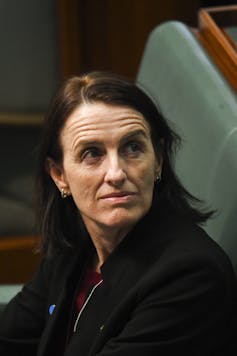
Lukas Coch/AAP
Recent polling shows the seat is neck and neck. Even if the Liberals hold on, the contest is likely to draw attention and resources from campaigns in more marginal seats.
Neither federal leader has been able to visit WA until recently. Morrison is more of a known quantity in WA compared to Albanese, which may help him at the ballot box. Newspoll indicates both leaders have a net satisfaction rating in WA of minus 5%, compared to nationally, where Morrison polls much worse than Albanese.
The McGowan factor
Labor has not won 50% of the two-party preferred (2PP) vote in WA at a federal election since 1987, when local hero Bob Hawke was prime minister. In 2019, Labor won just 44.45% of the 2PP vote.
The big change in WA since 2019 has of course been COVID-19 and the stunning result of the March 2021 state election. Labor won 60% of the primary vote and 70% 2PP. The Liberals were reduced to a humiliating two seats in the 59-seat Legislative Assembly, cutting resources and morale for the upcoming federal contest.

Trevor Collens/AAP
The big question now is whether McGowan’s political dominance at the state level will eat into WA’s traditional support for the Liberals at the federal level.
Quarterly polls since the state election have shown Labor’s lead holding steady. If this continues, that would represent a 2PP swing of 8.5%, putting three if not four Liberal seats in jeopardy.
TASMANIA
Michael Lester, casual academic, University of Tasmania
Tasmania has just five House of Representative seats but two of them are very marginal and a third is held by an independent. So the state may still have a big impact on the outcome of the election if there is a tight finish, particularly if there is a hung parliament.
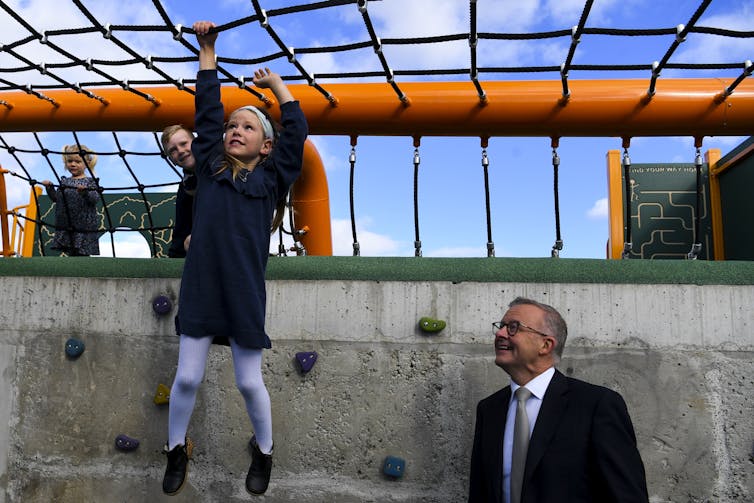
Lukas Coch/AAP
The five Tasmanian electorates align with the electoral boundaries for the state House of Assembly where there are clear geographical, cultural and political divides. The two southern seats are considered safe and unlikely to change hands. Franklin is held by Labor’s Julie Collins with a 12.2% margin. In Hobart-centred Clark, independent Andrew Wilkie has held the seat since 2010 and now has a 22.1% margin. If there is a hung parliament, Wilkie may play a key role in post-election negotiations to form government.
Labor’s Brian Mitchell has held Lyons since 2016 and in 2019 won with a comfortable 5.2% but was helped considerably when the Liberal candidate resigned during the campaign over inappropriate social media posts. This time, he is up against Liberal candidate Susie Bower, who contested Lyons at last year’s Tasmanian state election.
Bass and Braddon
Both major parties are focusing most of their campaign effort in the northern seats of Bass and Braddon, both of which have already had multiple visits by the party leaders.
Bass and Braddon have both been won by the same party at each of the last eight elections and both are currently held by the Liberals. Bridget Archer in Bass is seeking to become the first incumbent to retain the seat in two decades. She holds it on just 0.4% and is up against the previous incumbent, Labor’s Ross Hart.

Mick Tsikas/AAP
Braddon’s current Liberal member Gavin Pearce holds the seat on a 3.1% margin and is opposed by Labor’s Chris Lynch. A March uComms poll conducted for the The Australia Institute found only one percentage point separated the two on a first preference basis. The preferences of the Greens, Jacqui Lambie Network and independent Craig Garland are expected to decide the seat.
The Senate race

Mick Tsikas/AAP
In the Senate, Labor’s Anne Urquhart and Helen Polley and the Liberal Party’s Jonathon Duniam and Wendy Askew are expected to be re-elected, along with the Greens’ Peter Whish-Wilson.
The big interest is whether long-term Liberal senator Eric Abetz can overcome being dumped to the third position on the party’s senate ticket to win the last seat.
Abetz is running a below-the-line campaign and has billboards across the state with no Liberal branding to try to maximise his chances. Tasmanians are more likely than voters in other states to vote below the line due to their familiarity with proportional voting for the state’s House of Assembly.
When former Labor senator Lisa Singh was demoted to last on her party’s ticket she successfully ran a below-the-line campaign which saw her re-election in 2016. Abetz will have strong competition from the Labor’s third candidate Kate Rainbird as well as from the Jacqui Lambie Network’s Tammy Tyrell.
NEW SOUTH WALES
Mark Rolfe, honorary lecturer, School of Social Sciences, University of New South Wales
In New South Wales, Morrison will sandbag the three marginal Coalition seats (Reid and Lindsay in Sydney and Robertson on the central coast) and push for the ten Labor seats that have margins of less than 6%. He must gain in his home state to offset losses expected in Queensland, Western Australia and Victoria.
A problem with this strategy will be Labor reminding voters of Morrison’s failures in seats which suffered recent natural disasters, while promising more emergency services and infrastructure under an Albanese government.
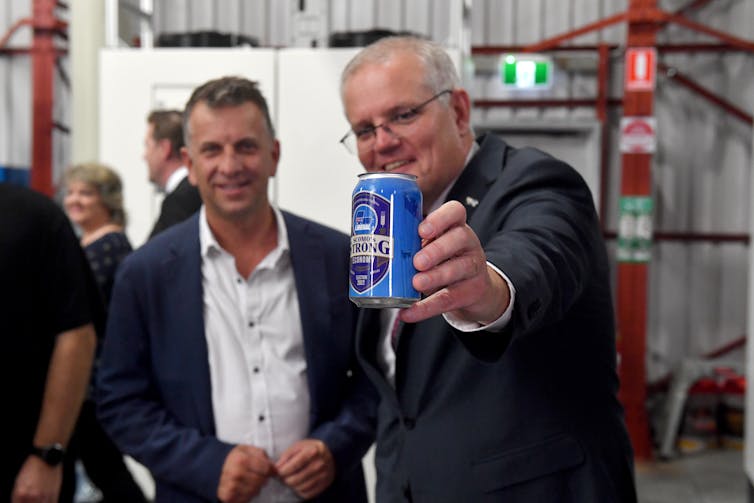
Mick Tsikas/AAP
These include Macquarie (0.2%), covering the Blue Mountains and Hawkesbury, Eden-Monaro (0.8%) and Gilmore (2.6%) on the south coast and Richmond (4.1%) on the north coast, which Morrison initially left out of flood relief.
Infighting and court challenges
Morrison added further difficulties by wasting a year in a toxic standoff with his state branch over preselections for 12 candidates. This was only resolved last Friday evening.
À lire aussi :
Why party preselections are still a mess, and the courts haven’t helped
Morrison thereby robbed new candidates of valuable campaigning time, especially against independent Zali Steggall, who is defending Warringah (7.2%). Likewise, independent Allegra Spender is alarming current Liberal Dave Sharma in Wentworth (9.8%) and Kylea Tink is scaring his colleague Trent Zimmerman in North Sydney (9.3%).
Factional fights in Reid and Eden-Monaro will also hamper campaigning support.
Commutes and cost-of-living
Further complicating Morrison’s strategy is the disastrous rental and housing affordability crisis. This not only has an impact on disaster recovery, it afflicts all regions and it exacerbates anxieties over stagnating wages and living costs.
Both Morrison and Albanese have been campaigning in Dobell (Labor held on 1.5%) and Robertson (Liberal held on 4.2%). On the central coast between Sydney and Newcastle, these seats contain “dormitory suburbs” where many people commute out of the area for work. They have high numbers of families with children and of people over 65.
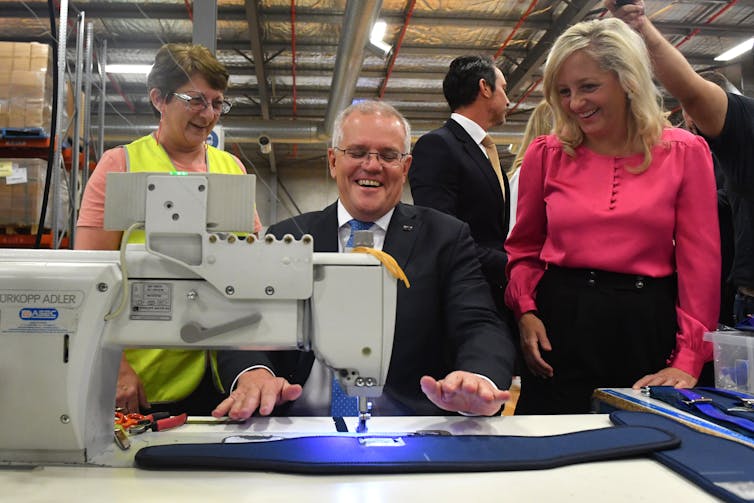
Mick Tsikas/AAP
Therefore, policies on aged care and Medicare are especially important to them, as are road and rail spends to ease long commutes.
But we should ignore any clichés about “Howard’s battlers” deciding the election in western Sydney seats like Parramatta and Lindsay. They were never rusted-on Labor working class loyalists, as claimed, but swinging voters.
The working class did not vote more for the Coalition than Labor in 2019, there was a bit of a swing in some seats. The ALP still gets the most of the working class votes, even if this has declined in comparison to the past.
![]()
Paul Williams is a Research Associate with the TJ Ryan Foundation.
John Phillimore has previously worked as an adviser to state Labor governments in Western Australia, most recently in 2007.
Michael Lester was a political adviser to Labor Premier Jim Bacon from 1998 to 2002
Mark Rolfe, Rob Manwaring et Zareh Ghazarian ne travaillent pas, ne conseillent pas, ne possèdent pas de parts, ne reçoivent pas de fonds d’une organisation qui pourrait tirer profit de cet article, et n’ont déclaré aucune autre affiliation que leur poste universitaire.
– ref. State of the states: six politics experts take us on a trip around Australia – https://theconversation.com/state-of-the-states-six-politics-experts-take-us-on-a-trip-around-australia-180861







